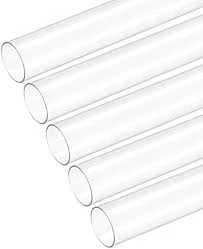Dec . 03, 2024 19:02 Back to list
hdpe welding rod
Understanding HDPE Welding Rods Applications and Benefits
High-Density Polyethylene (HDPE) is a widely used thermoplastic, known for its excellent strength-to-density ratio. It is utilized in a variety of industrial applications, ranging from piping systems to geomembranes in landfills. One of the critical components in the application and maintenance of HDPE products is the HDPE welding rod, which plays a vital role in joining, repairing, or reinforcing HDPE structures. This article explores what HDPE welding rods are, their applications, and the benefits they offer.
What Are HDPE Welding Rods?
HDPE welding rods are specialized materials made from the same base polymer as HDPE products. They are typically used in fusion welding processes to join two or more pieces of HDPE together. The rods come in various diameters and lengths, depending on the specific requirements of the application. The welding process involves melting the rod and the surfaces of the HDPE components, allowing them to fuse together upon cooling.
Applications of HDPE Welding Rods
1. Piping Systems One of the prominent uses of HDPE welding rods is in the repair and installation of HDPE piping systems. These rods allow for seamless joints, which are crucial for maintaining the integrity of pipelines in water, gas, and chemical transportation.
2. Geosynthetics In the construction of landfills and retention ponds, HDPE welding rods are employed to create impermeable barriers. The rods help in sealing geomembranes to prevent leakage of contaminants into the surrounding environment.
3. Industrial Fabrication Many industries utilize HDPE welding rods to fabricate customized components and structures. These rods can be used to create tanks, storage solutions, and various fittings that require strong, leak-proof seals.
4. Repair Work In cases where an HDPE component is damaged, welding rods can offer a quick and effective repair solution. By fusing the broken parts together with HDPE welding rods, the component can regain its structural integrity and functionality.
hdpe welding rod

5. Plastic Fabrication HDPE welding rods are also used in the general fabrication of plastic items, including signs, storage containers, and even furniture. Their versatility makes them an essential tool in any manufacturing process that utilizes HDPE.
Benefits of Using HDPE Welding Rods
1. Durability HDPE is known for its impressive durability, and when using welding rods of the same material, the resulting joints are equally robust. This durability ensures that the welded areas can withstand various stresses, making them ideal for high-demand applications.
2. Chemical Resistance HDPE offers excellent resistance to a wide range of chemicals, meaning that welded joints remain reliable even in harsh environments. This characteristic is essential for industries that handle corrosive substances.
3. Temperature Tolerance HDPE welding rods can withstand moderate temperature changes without compromising the integrity of the welded joint, making them suitable for applications where temperature fluctuations are common.
4. Ease of UseHDPE welding rods can be used with various welding techniques, including extrusion welding and hot gas welding, allowing for flexibility in the welding process. Many operators find the process straightforward, requiring minimal specialized training.
5. Environmental Impact HDPE is recyclable, and using HDPE welding rods can contribute to a more sustainable practice by allowing for the repairing and reusing of existing materials instead of discarding them.
Conclusion
HDPE welding rods are crucial for the effective joining and repair of HDPE materials across numerous industries. Their compatibility with HDPE products, combined with their durability and chemical resistance, makes them an invaluable tool in the fabrication and maintenance of HDPE structures. Whether in piping systems, geosynthetics, or industrial applications, HDPE welding rods prove to be a reliable choice for ensuring strong and lasting connections. By choosing HDPE welding rods, industries not only enhance the performance of their products but also contribute to more sustainable practices in material usage.
-
High-Quality PPR Pipes and Fittings Durable ERA PPR & PVC PPR Solutions
NewsJul.08,2025
-
Black HDPE Cutting Board - Durable, Non-Porous & Food Safe HDPE Plastic Cutting Board
NewsJul.08,2025
-
High-Quality CPVC Panel Durable HDPE & PVC Panels Supplier
NewsJul.08,2025
-
Double PE Welding Rod Supplier - High Strength, Durable & Versatile Welding Solutions
NewsJul.07,2025
-
High-Quality PVC-O Pipe Supplier Durable 75mm PVC Pipe & Connections Leading PVC Pipe Company
NewsJul.07,2025
-
HDPE Drainage Pipe Supplier – Durable & Corrosion-Resistant Solutions
NewsJul.06,2025

